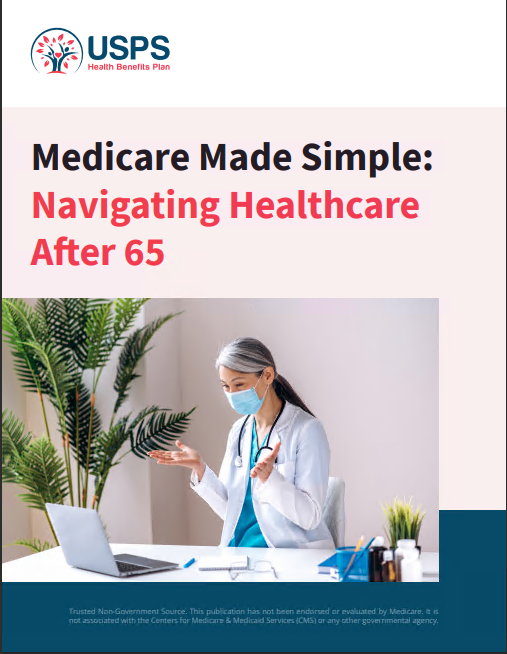Key Takeaways
-
Opting out of the new prescription drug plan tied to the Postal Service Health Benefits (PSHB) Program in 2025 may result in significant coverage gaps and financial drawbacks.
-
Understanding the integration with Medicare Part D and how it impacts your future access to prescription medications is crucial before making any decision.
Understanding the 2025 Prescription Drug Change
In 2025, the Postal Service Health Benefits (PSHB) Program replaces the Federal Employees Health Benefits (FEHB) Program for USPS employees and retirees. A major component of this change involves prescription drug coverage. If you’re Medicare-eligible, your PSHB plan now integrates with a Medicare Part D Employer Group Waiver Plan (EGWP).
This shift aims to lower out-of-pocket costs and provide broader pharmacy access. But here’s the catch—if you choose to opt out of this integrated prescription drug plan, the consequences could be long-term and difficult to reverse.
What Happens When You Opt Out
If you’re thinking about opting out of the new prescription drug plan, here’s what that actually means:
-
You’ll lose your PSHB prescription drug coverage.
-
You won’t be able to re-enroll unless you qualify for a future Special Enrollment Period (SEP).
-
You may face higher drug costs elsewhere, especially if you do not have other creditable coverage.
Once you opt out, your pharmacy benefits under your PSHB plan vanish. The decision is treated as final unless a specific SEP applies, such as moving, losing other coverage, or returning from abroad. But in most cases, there’s no second chance.
Why the New Prescription Plan Was Introduced
The USPS and the Office of Personnel Management (OPM) designed this plan to:
-
Align with Medicare Part D to reduce overall costs.
-
Offer a $2,000 cap on annual out-of-pocket drug expenses under Medicare Part D.
-
Expand access to participating pharmacies.
-
Provide cost savings through coordinated benefits.
If you have Medicare Part B and you’re enrolled in a PSHB plan, you’re automatically placed into this prescription drug plan—unless you actively opt out. That means unless you take action, you’re covered.
Consider the Financial Protection It Offers
The $2,000 annual out-of-pocket cap under Medicare Part D is a major benefit in 2025. This cap protects you from high drug expenses if you need ongoing or specialty medications. Without this integrated plan, you may not have the same protection.
Also, the plan includes protections like:
-
$35 monthly cap on insulin.
-
Access to medications across a wide pharmacy network.
-
Coverage during all three phases of Medicare Part D (deductible, initial coverage, and catastrophic).
Choosing to opt out removes these safeguards.
Eligibility and Enrollment Exceptions
There are specific groups that are not required to enroll in Medicare Part B to maintain PSHB coverage. These include:
-
Retirees who were already retired as of January 1, 2025.
-
Employees aged 64 or older as of January 1, 2025.
-
Individuals living abroad.
-
Beneficiaries of the VA or Indian Health Services.
However, even if you fall into one of these exception categories, the integrated prescription drug plan can still benefit you significantly. Opting out should be a carefully considered choice.
How the Plan Coordinates With Medicare
The integrated prescription drug plan works alongside Medicare Part D but includes extra benefits because it’s offered through an employer group plan. That means:
-
Lower out-of-pocket costs than standalone Medicare drug plans.
-
Enhanced formulary access.
-
Coordination between your PSHB and Medicare benefits.
By staying enrolled, you get the best of both systems.
Common Misunderstandings About the Plan
Many USPS retirees and employees mistakenly believe:
-
They already have sufficient coverage through another plan. Not all plans offer the same protections or costs as the integrated PSHB option.
-
Opting out has no long-term effects. In reality, opting out removes your drug coverage and may limit your re-enrollment opportunities.
-
The default enrollment means they must accept it. While it is automatic for Medicare-eligible enrollees, you do have the option to opt out—but you need to weigh the trade-offs carefully.
What You Should Do Before Making a Decision
Before you opt out of the prescription drug plan, make sure you:
-
Review your plan materials provided during Open Season.
-
Understand how your current drug costs compare to the new plan.
-
Check if you’re eligible for other credible coverage.
-
Call the PSHB Navigator Help Line or consult a licensed agent for assistance.
It’s better to ask questions now than deal with coverage gaps later.
How the Opt-Out Process Works
If you decide to opt out, the process isn’t automatic—you’ll need to actively submit your choice through the appropriate PSHB platform:
-
Retirees should use KeepingPosted.org or the appropriate OPM mailing address.
-
Current USPS employees use the LiteBlue portal.
Remember, once you opt out, it’s not easy to rejoin unless you experience a qualifying life event.
The Risk of Inaction
While opting out is an action, so is doing nothing if you’re not aware of your automatic enrollment. If you ignore the mailed notices, you could lose out on key benefits—or worse, accidentally opt out when you don’t mean to.
In 2025, new PSHB rules are stricter about re-entry. Even those who later regret the decision may find the door closed. Make sure you:
-
Don’t toss plan materials.
-
Double-check your status on your enrollment platform.
-
Reach out for help if you’re unsure.
Timeframe You Need to Know
The PSHB Open Season took place from November to December 2024. Any plan changes, including prescription coverage decisions, became effective on January 1, 2025. If you opted out during that time, the change is already in effect.
Going forward, unless you qualify for a Special Enrollment Period (SEP), there is no routine chance to opt back in. If you’re uncertain, confirm your enrollment today.
Your Action Plan for 2025
If you’re enrolled in a PSHB plan and Medicare, and you haven’t opted out, you’re automatically part of the integrated prescription drug plan. That’s good news.
If you’re still considering opting out:
-
Re-evaluate the cost, coverage, and access implications.
-
Speak with a licensed agent for a personalized review.
-
Confirm if your reasons for opting out are based on facts, not assumptions.
Making the wrong decision now can have lasting consequences on your access to necessary medications.
Think Long-Term About Prescription Coverage
It’s easy to focus on what you pay today, but the real value of this plan is in what it protects you from in the future: catastrophic drug costs, limited access to medications, and restricted pharmacy networks.
Prescription needs often increase with age. What seems unnecessary now might become essential later. The 2025 plan is designed with this in mind. It brings better protection, broader access, and more financial security—especially if you’re managing chronic or serious health conditions.
Why You Should Reconsider Opting Out
If you’re on the fence, think about the broader impact:
-
Will you be able to afford high-cost medications without the PSHB plan?
-
Is another plan you’re considering truly equivalent?
-
Do you have the flexibility to opt back in if your situation changes?
For most USPS retirees and Medicare-eligible employees, staying enrolled in the integrated prescription plan is the safer and more practical choice.
Plan Smart Before Making a Final Call
Before you make any final decisions about your prescription drug coverage under PSHB, be sure to understand what you’re walking away from. The savings, protections, and flexibility of the 2025 prescription plan are hard to match elsewhere. It’s not just about now—it’s about peace of mind for the years ahead.
If you’re still unsure, speak with a licensed agent listed on this website to get professional advice tailored to your situation.











